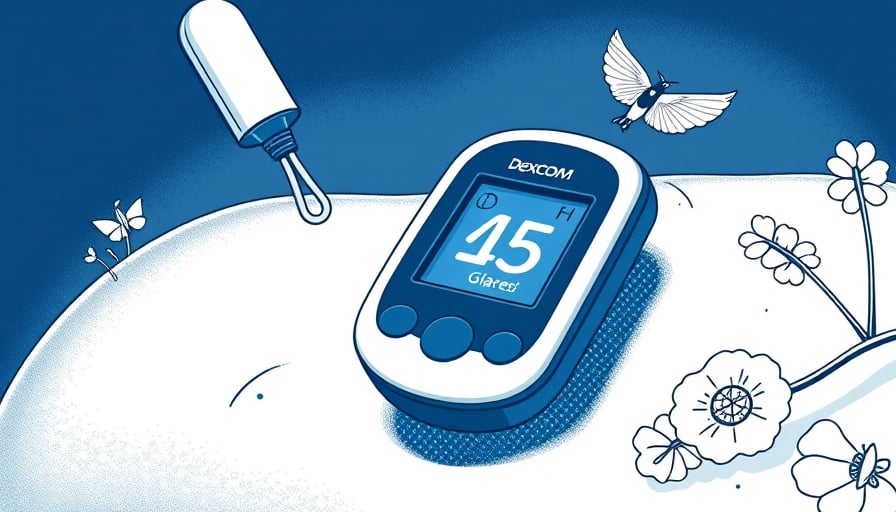Dexcom Inc.: A Bitter Aftertaste Despite a Q3 Upswing
Dexcom Inc. (NASDAQ: DXCM) has been the subject of a feverish media swirl that has left investors clutching at the tail of what once seemed an unstoppable growth story. The company, a key player in the continuous glucose monitoring (CGM) sector, posted a Q3 revenue beat that surpassed consensus by roughly $30 million and reported a 20 % year‑over‑year organic growth rate. Yet, the stock’s reaction has been anything but celebratory: it has plunged from a 52‑week high of $93.25 to a 52‑week low of $56.45, trading today at $58.22.
1. Analyst Downgrades: The Immediate Catalyst
The most immediate trigger for the recent slide was Citigroup’s decision, on 2025‑10‑31, to slash its price target from $85.00 to $75.00 while retaining a buy rating. The downgrade was echoed by Canaccord Genuity a day later, lowering its target to $99.00. These moves cast doubt on the company’s near‑term upside, even as the company’s fundamentals appear strong—its market cap sits at $22.71 billion and its P/E ratio of 37.96 reflects a valuation that already incorporates significant expectations.
On 2025‑11‑02, the stock gapped down to $59.19, a 14 % swing from the prior close of $68.20. The gap is a clear manifestation of investor anxiety: the market has priced in the revised outlook and punished the stock for a perceived over‑optimistic forecast.
2. Earnings Reality Check
Dexcom’s Q3 results were undeniably impressive on paper: revenue beat, solid growth, and a forward guidance that suggested continued momentum. But the company’s “surprisingly cautious” outlook—highlighted by Yahoo Finance’s headline—signaled that future growth may not live up to the lofty expectations of earlier quarters. Investors have long warned that the CGM market is approaching saturation, and that incremental revenue gains will be increasingly difficult to sustain without breakthrough innovation or aggressive market expansion.
Moreover, the company’s guidance for 2025 was quietly trimmed, a fact that many analysts took as a hint that the growth story was already reaching its limits. When a company with a 52‑week high of $93.25 fails to convince the market that its future prospects remain robust, the stock is bound to suffer.
3. Legal Headwinds: A Securities Fraud Class Action
Adding to the cloud of uncertainty is a securities fraud class action lawsuit filed on behalf of investors who purchased or acquired Dexcom shares between 2019‑12‑16 and 2025‑01‑17. The lawsuit, led by Kessler Topaz Meltzer & Check, LLP, alleges that Dexcom misrepresented its revenue growth and future prospects. The deadline for investors to join the lawsuit is approaching, and the mere presence of the suit has been enough to erode confidence among cautious shareholders.
This legal threat is not a mere footnote; it signals that the company’s financial statements may have been compromised in a way that materially affected stock prices. Even if the lawsuit ultimately fails, the uncertainty and potential liability loom large over any future earnings announcements.
4. Market Context: A Broader Sell‑off
Dexcom’s decline did not occur in isolation. The S&P 500 experienced mixed performance on 2025‑10‑31, with Amazon and Nvidia delivering gains, while technology and healthcare stocks like Dexcom suffered losses. The Nasdaq Composite’s modest 0.6 % rise contrasts sharply with the 14 % fall in Dexcom’s price, underscoring the company’s underperformance relative to its peers.
In a market environment where investors are increasingly risk‑averse, any hint of overvaluation or legal risk can trigger a swift correction. Dexcom’s current position as the worst performer in the S&P 500, as reported by Barrons, reflects a broader mistrust in its valuation model.
5. The Bottom Line: Valuation vs. Reality
Dexcom’s story is one of high expectations colliding with harsh reality. The company’s strong fundamentals—its leading CGM technology, sizeable market cap, and solid revenue growth—are undeniable. Yet, the combination of analyst downgrades, a cautious earnings outlook, and a looming securities fraud lawsuit has forced the market to reassess the company’s true value.
Investors must ask: does a P/E of 37.96 make sense when growth prospects are being trimmed and legal risks are mounting? The market’s current price of $58.22 suggests that the answer is no, at least until Dexcom can provide compelling evidence that it will reverse the slowdown, resolve the legal challenges, and deliver on its growth promises. Until then, the stock’s trajectory will likely remain a cautionary tale for those who once celebrated its ascent.
